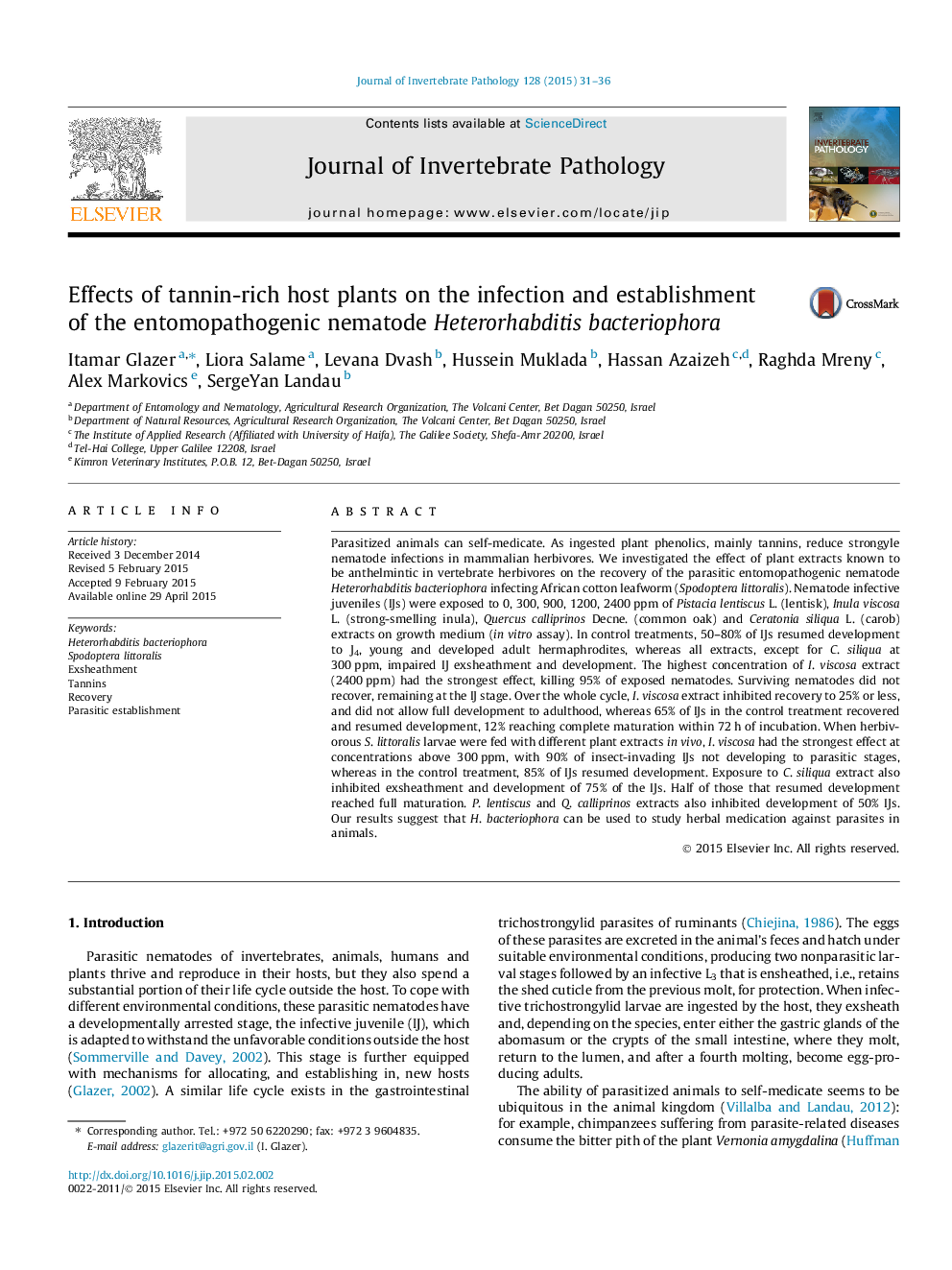| کد مقاله | کد نشریه | سال انتشار | مقاله انگلیسی | نسخه تمام متن |
|---|---|---|---|---|
| 6389417 | 1628224 | 2015 | 6 صفحه PDF | دانلود رایگان |

- Exposure of parasitic nematode to tannin-rich plant extracts resulted in an inhibition of recovery.
- Parasitic establishment of nematodes in an insect larvae fed with tannin-rich plant extracts was inhibited.
- Ingestion of phenolics may well be one self-medication strategy among insects against parasites.
Parasitized animals can self-medicate. As ingested plant phenolics, mainly tannins, reduce strongyle nematode infections in mammalian herbivores. We investigated the effect of plant extracts known to be anthelmintic in vertebrate herbivores on the recovery of the parasitic entomopathogenic nematode Heterorhabditis bacteriophora infecting African cotton leafworm (Spodoptera littoralis). Nematode infective juveniles (IJs) were exposed to 0, 300, 900, 1200, 2400Â ppm of Pistacia lentiscus L. (lentisk), Inula viscosa L. (strong-smelling inula), Quercus calliprinos Decne. (common oak) and Ceratonia siliqua L. (carob) extracts on growth medium (in vitro assay). In control treatments, 50-80% of IJs resumed development to J4, young and developed adult hermaphrodites, whereas all extracts, except for C. siliqua at 300Â ppm, impaired IJ exsheathment and development. The highest concentration of I. viscosa extract (2400Â ppm) had the strongest effect, killing 95% of exposed nematodes. Surviving nematodes did not recover, remaining at the IJ stage. Over the whole cycle, I. viscosa extract inhibited recovery to 25% or less, and did not allow full development to adulthood, whereas 65% of IJs in the control treatment recovered and resumed development, 12% reaching complete maturation within 72Â h of incubation. When herbivorous S. littoralis larvae were fed with different plant extracts in vivo, I. viscosa had the strongest effect at concentrations above 300Â ppm, with 90% of insect-invading IJs not developing to parasitic stages, whereas in the control treatment, 85% of IJs resumed development. Exposure to C. siliqua extract also inhibited exsheathment and development of 75% of the IJs. Half of those that resumed development reached full maturation. P. lentiscus and Q. calliprinos extracts also inhibited development of 50% IJs. Our results suggest that H. bacteriophora can be used to study herbal medication against parasites in animals.
Journal: Journal of Invertebrate Pathology - Volume 128, June 2015, Pages 31-36